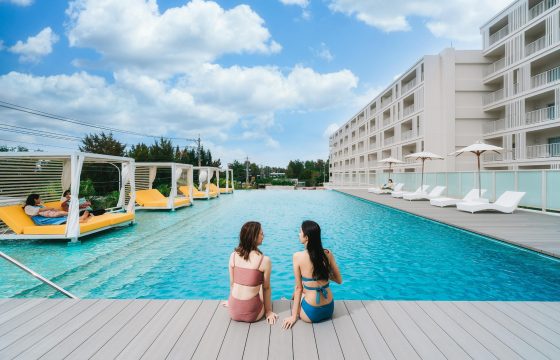Know the temperature and clothing for the tropical resort of Okinawa

Okinawa Prefecture is made up of about 160 islands of various sizes floating in the sea area between Kyushu and Taiwan. At the center of the island is Okinawa Island, the seventh largest island in Japan. The island stretches about 110 km from north to south, and in the southern part are Okinawa's largest city, Naha City, while in the central part are castle ruins from the Ryukyu Kingdom era and a US military base. The northern part is covered with subtropical forest and is home to the Churaumi Aquarium, and the coastal beach resorts are lined with world-famous hotels. The island has countless attractions. Many tourists visit from both within Japan and overseas.
Okinawa Island has a subtropical climate and is warm all year round, averaging 6 to 7 degrees Celsius higher than in major metropolitan areas such as Tokyo and Osaka. Winter temperatures are about 10 degrees Celsius higher, making it particularly comfortable. UV rays are high all year round, so UV protection is essential even in winter and on cloudy days. Also, many typhoons approach from July to September, so it is important to check typhoon information frequently.
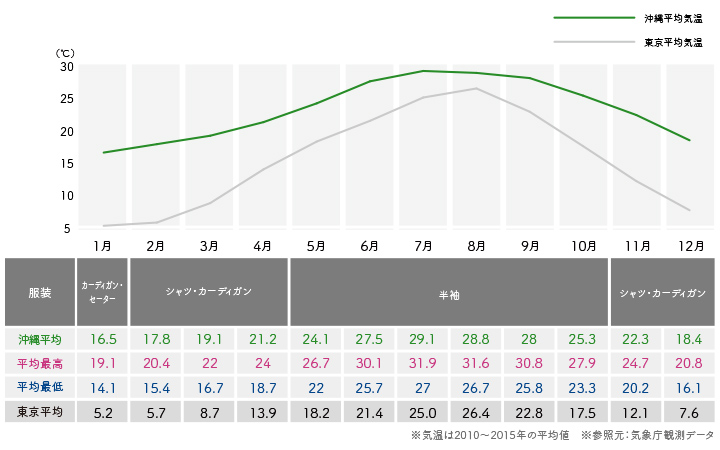
<Okinawa main island climate and recommended clothing>
Spring (March to May) Temperature and Clothing on Okinawa's Main Island
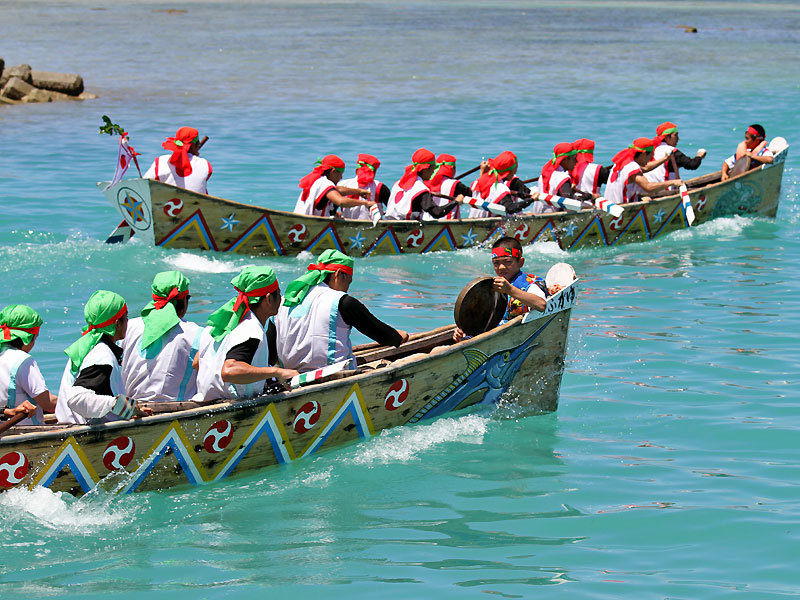
The average temperature in March is about 19°C. In the beginning of the month, when the north wind blows, the temperature feels lower, so cardigans and hoodies are useful. The beaches open for business from mid-March to early April. During the day, when short sleeves are comfortable, the sun is strong and the amount of UV rays is similar to that in July in the Kanto region. Sunburn measures are necessary. In mid-March, the largest pottery market in Okinawa Prefecture, "Yachimun Market," is held in Onna Village. Ginowan City is full of events, including the "Ryukyu Sea Flame Festival," where 10,000 fireworks are set off, and the "Okinawa Movie Festival" begins on the entire main island. Around Golden Week, when the sea festival "Hari," which has a history of about 600 years, is held, the maximum average temperature exceeds 25°C, making it humid and hot enough to make you sweat even in short sleeves.
The rainy season usually starts early, around May 10th, and is characterized by torrential rainfall in a short period of time, so it's a good idea to bring a compact raincoat and towel. We also recommend taking shelter from the rain and relaxing at a cafe.
Okinawa Island Summer (June to August) Temperature and Clothing
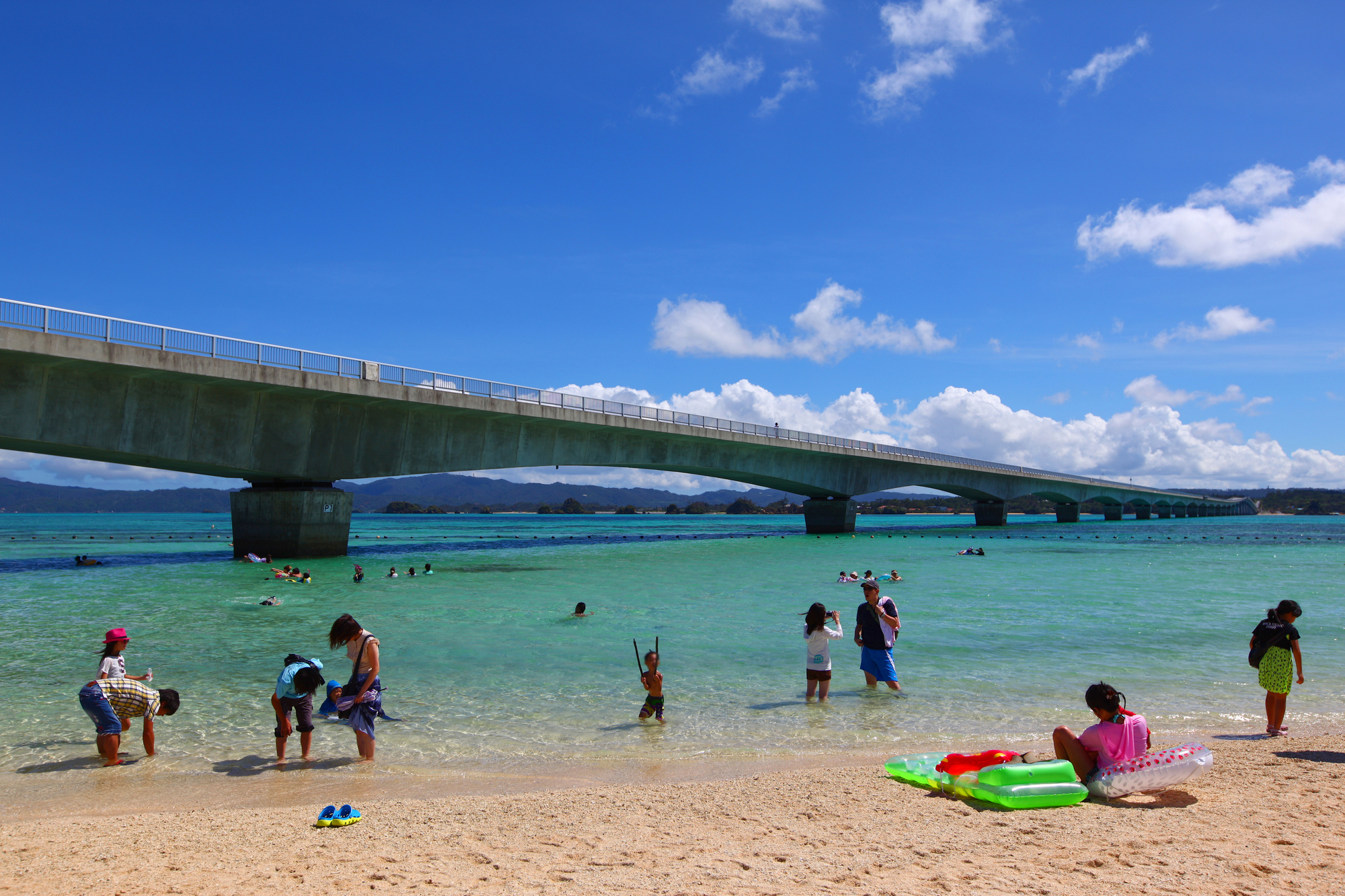
The gloomy weather of the rainy season will continue until late June. After that, the weather improves, making it ideal for marine leisure activities. You can enjoy marine activities at marine spots unique to Okinawa, such as snorkeling at the Blue Cave in Onna Village and swimming in the sea at Kouri Island, an isolated island surrounded by emerald green waters. The average temperature in July and August is about 29°C. From mid-July, when typhoons approach, the humidity increases and the muggy weather also increases. We recommend wearing breathable clothing such as Kariyushi wear or linen dresses. The amount of UV rays will also reach its peak, so be sure to take precautions against sunburn.
A typical summer event in Okinawa is the Obon festival "Eisa." In each village, you can see the "Michijune," a memorial service for ancestors, where people dance and parade around while beating drums and whistles. On the first Sunday of August, a large-scale "Summer Festival in Naha: 10,000 Eisa Dancers" is held.
Temperature and clothing for autumn (September to November) on Okinawa Island
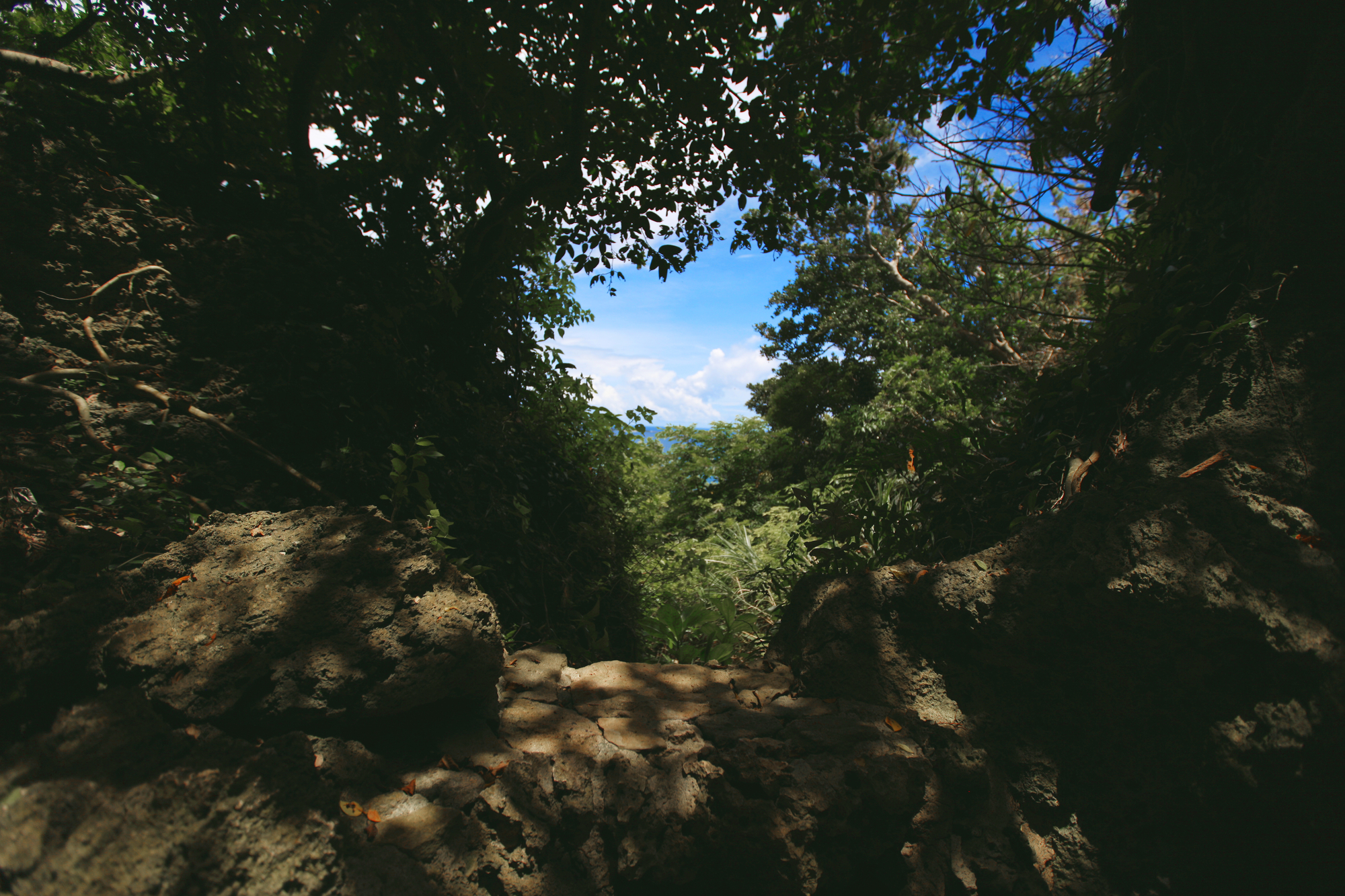
Okinawa is still experiencing perpetual summer even in September. As with August, many typhoons approach, so the humid weather continues. Breathable clothing is sufficient. You can still enjoy beach leisure activities. In October, the heat subsides. The average temperature is about 25°C, and in November it is also about 22°C, making it a comfortable place to spend time. However, the sea breeze shifts northward, making it feel cooler in the mornings and evenings, so be sure to bring a light outer layer such as a cardigan or hoodie.
There is little rain in October and November, making it the perfect season for driving and sightseeing. It is perfect for a journey of discovery, such as strolling around Kokusai Street and Naha City's Daiichi Makishi Public Market, or touring the ruins of the ancient Ryukyu Kingdom. We also recommend visiting power spots such as the World Heritage Site "Sefa Utaki," a place of prayer, and the island of the gods, Kudaka Island.
Temperature and clothing for winter (December to February) on Okinawa Island

The average temperature in December is 18.4°C. The temperature is similar to that in Tokyo in May, but the northerly wind makes it feel like late October to early November in Tokyo. A sweater or light outerwear is necessary in the mornings and evenings and on the beach. January in Okinawa is cherry blossom season. From mid-January to early February, the cherry blossom front moves south from the north to the south, and the deep pink Kanhizakura can be seen in various places. The average temperature during this period is 16.5°C. As in December, you should bring a coat to protect you from the wind. February, when professional baseball camps are crowded, is as warm as May in Tokyo. There are days when you can wear short sleeves during the day, but there are many cloudy days, so it is a good idea to bring a hoodie or something similar.
If you're visiting Okinawa in winter, be sure to visit the northern area. You can enjoy the natural beauty of Okinawa, including whale watching, the Churaumi Aquarium, and the Yanbaru Forest. Cherry blossom viewing spots are also concentrated in the northern area, so you can enjoy cherry blossom viewing there as well.








